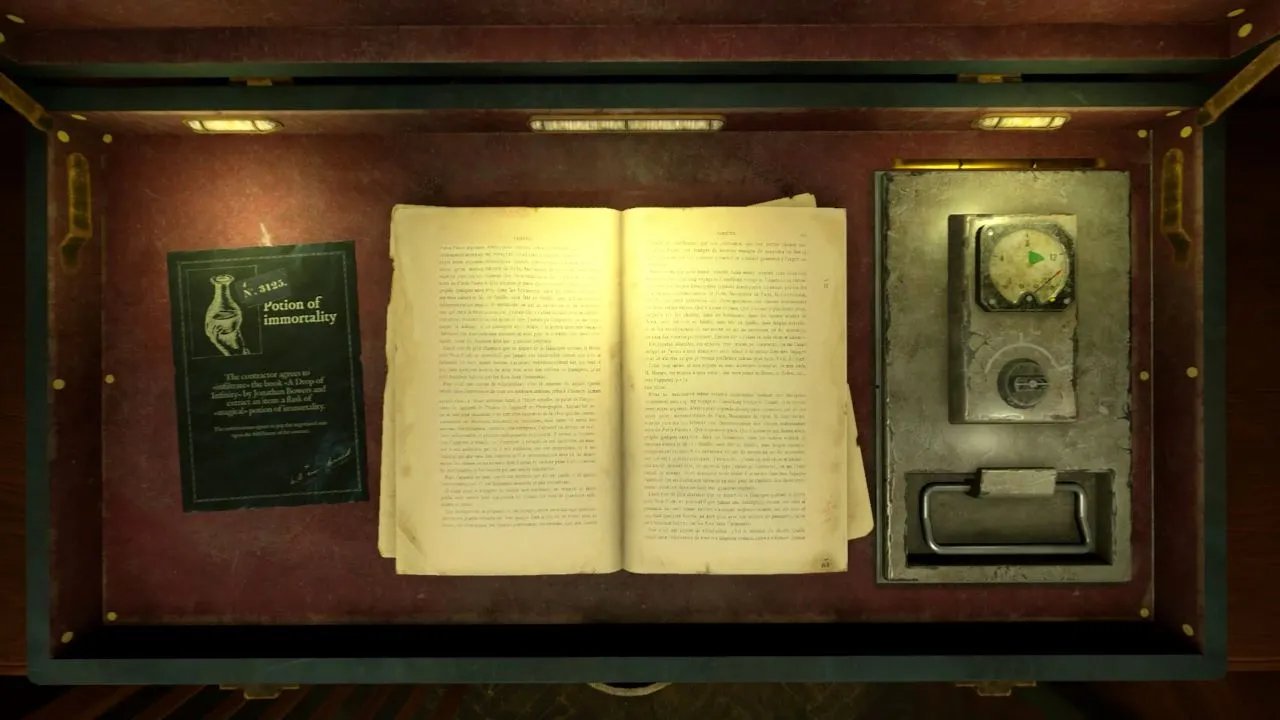
The Bookwalker: Thief of Tales – A Narrative Adventure Review
Contents
The Bookwalker: Thief of Tales, developed by DO MY BEST and published by tinyBuild, is a narrative-driven adventure puzzle game that launched in June. Its unique art style and intriguing premise have captured the attention of gamers looking for a story-rich experience. This review delves into the world of stolen narratives and explores the strengths and weaknesses of this literary adventure.
This game takes place in a world where literature isn’t just ink on paper; it’s a tangible realm that special individuals can enter. “Writer’s block” isn’t just a frustrating condition; it’s a literal punishment for writers who break the law. Is The Bookwalker: Thief of Tales worth adding to your library? Let’s dive in.
Stepping into Stolen Narratives
 Etienne Quist in The Bookwalker: Thief of TalesThe game follows Etienne Quist, a once-successful writer convicted of violating the Writer’s Act. The details of his crime remain shrouded in mystery, but his sentence is severe: Writer’s Block. Stripped of his ability to write, Etienne faces thirty years of hard labor at a publishing house. To escape this fate, he agrees to become a “Bookwalker,” a thief who enters literary worlds to steal key objects within their narratives. He must complete six heists for a mysterious organization to earn his freedom. Guiding Etienne on his journey is Roderick, a sentient page who serves as both advisor and moral compass.
Etienne Quist in The Bookwalker: Thief of TalesThe game follows Etienne Quist, a once-successful writer convicted of violating the Writer’s Act. The details of his crime remain shrouded in mystery, but his sentence is severe: Writer’s Block. Stripped of his ability to write, Etienne faces thirty years of hard labor at a publishing house. To escape this fate, he agrees to become a “Bookwalker,” a thief who enters literary worlds to steal key objects within their narratives. He must complete six heists for a mysterious organization to earn his freedom. Guiding Etienne on his journey is Roderick, a sentient page who serves as both advisor and moral compass.
A World of Two Perspectives
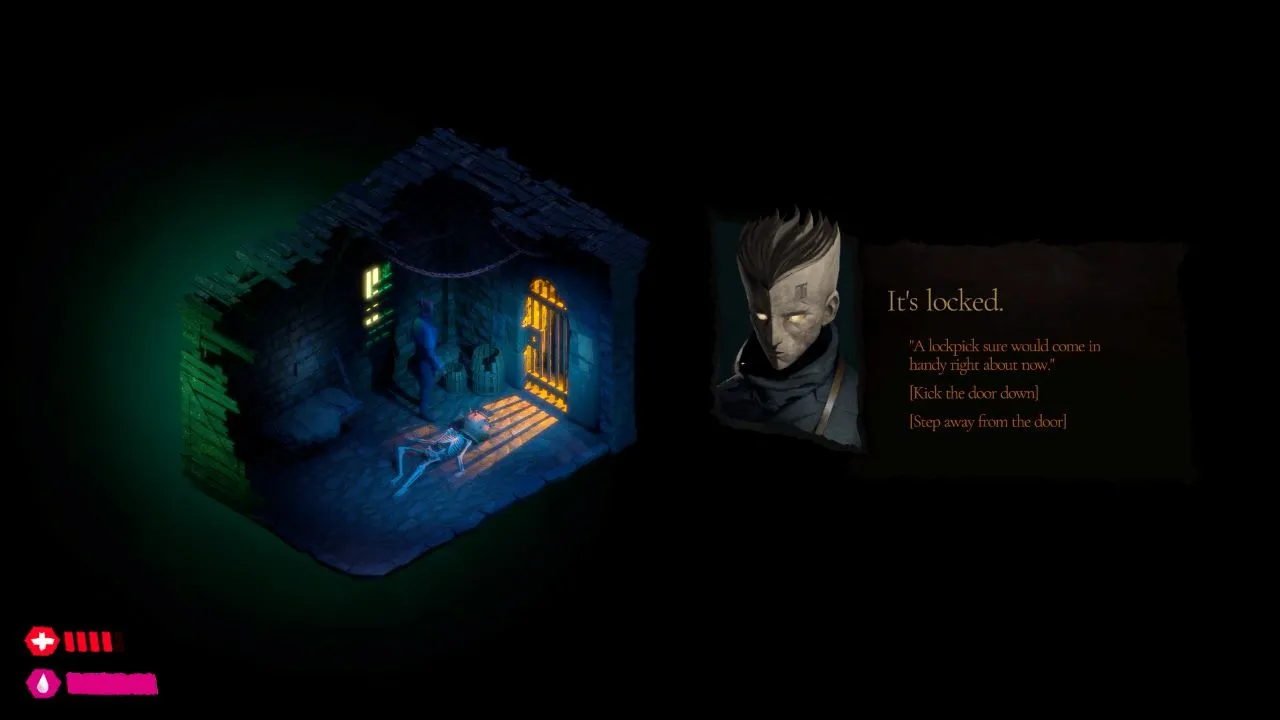 The Bookwalker: Thief of Tales gameplay utilizes two distinct gameplay perspectives. The real world is presented in a first-person view, allowing players to interact with Etienne’s environment, gather clues about his past, and accept missions from the enigmatic organization. Upon entering a book, the perspective shifts to an isometric view, offering a broader view of the literary landscapes and facilitating puzzle-solving.
The Bookwalker: Thief of Tales gameplay utilizes two distinct gameplay perspectives. The real world is presented in a first-person view, allowing players to interact with Etienne’s environment, gather clues about his past, and accept missions from the enigmatic organization. Upon entering a book, the perspective shifts to an isometric view, offering a broader view of the literary landscapes and facilitating puzzle-solving.
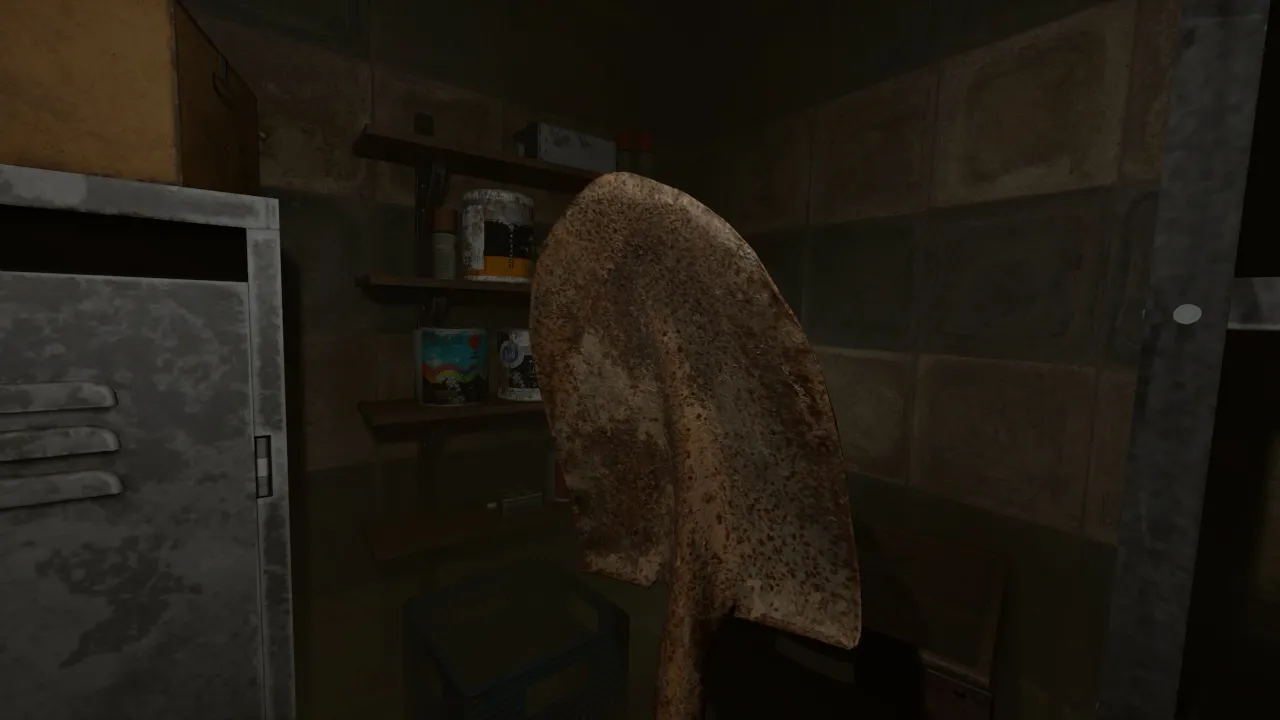 Isometric view in The Bookwalker: Thief of TalesThis dual-perspective approach effectively distinguishes Etienne’s reality from the fantastical worlds he infiltrates. The isometric view within the books allows for exploration and puzzle-solving, the core of the gameplay experience. Each chapter, representing a different book, requires players to navigate both the real world and the literary world to progress. For example, in the second book, players need a shovel found in the real world to unearth a crucial item within the snowy landscape of the book.
Isometric view in The Bookwalker: Thief of TalesThis dual-perspective approach effectively distinguishes Etienne’s reality from the fantastical worlds he infiltrates. The isometric view within the books allows for exploration and puzzle-solving, the core of the gameplay experience. Each chapter, representing a different book, requires players to navigate both the real world and the literary world to progress. For example, in the second book, players need a shovel found in the real world to unearth a crucial item within the snowy landscape of the book.
Engaging Environments and Thoughtful Puzzles
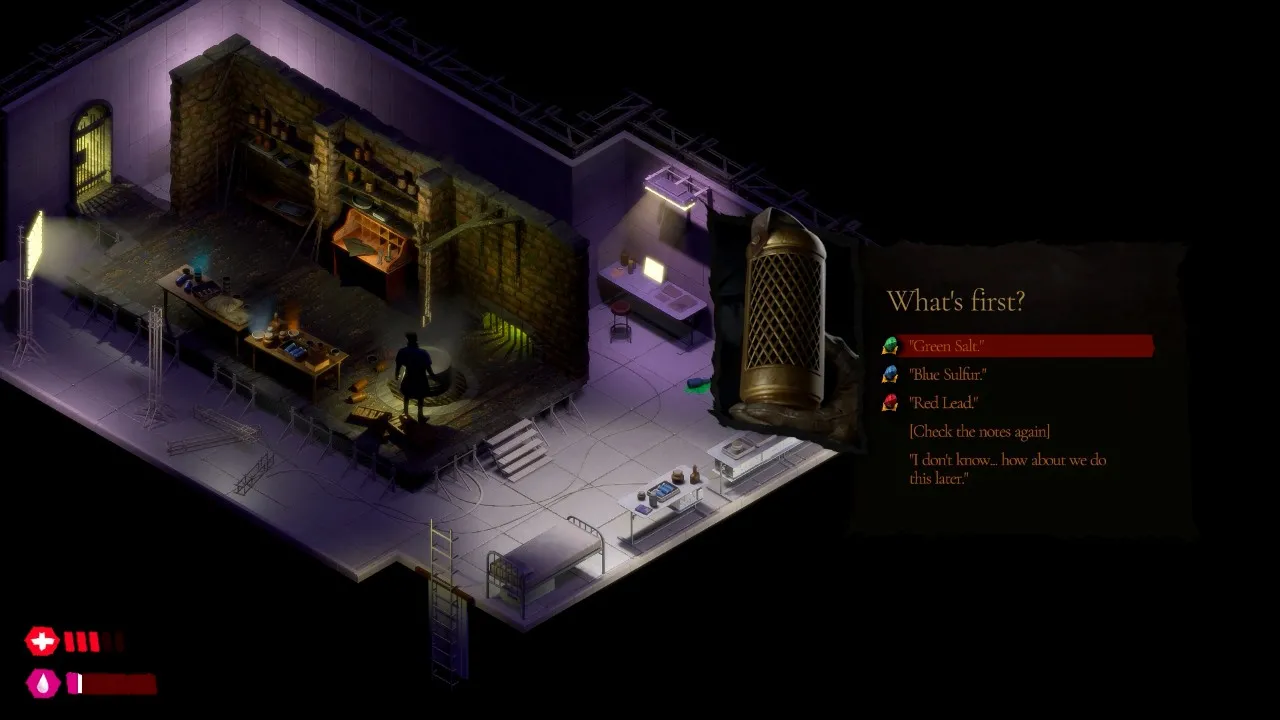 Real world environment in The Bookwalker: Thief of TalesThe real world, primarily Etienne’s apartment building, reflects the bleakness of his current situation. In contrast, the book worlds are vibrant and diverse, showcasing the richness of literature and reflecting the game’s core theme. The puzzles are well-designed, offering a satisfying challenge without being overly frustrating. Clues are integrated into the environment, encouraging careful observation and exploration. Crafting items from collected materials adds another layer to the puzzle-solving experience.
Real world environment in The Bookwalker: Thief of TalesThe real world, primarily Etienne’s apartment building, reflects the bleakness of his current situation. In contrast, the book worlds are vibrant and diverse, showcasing the richness of literature and reflecting the game’s core theme. The puzzles are well-designed, offering a satisfying challenge without being overly frustrating. Clues are integrated into the environment, encouraging careful observation and exploration. Crafting items from collected materials adds another layer to the puzzle-solving experience.
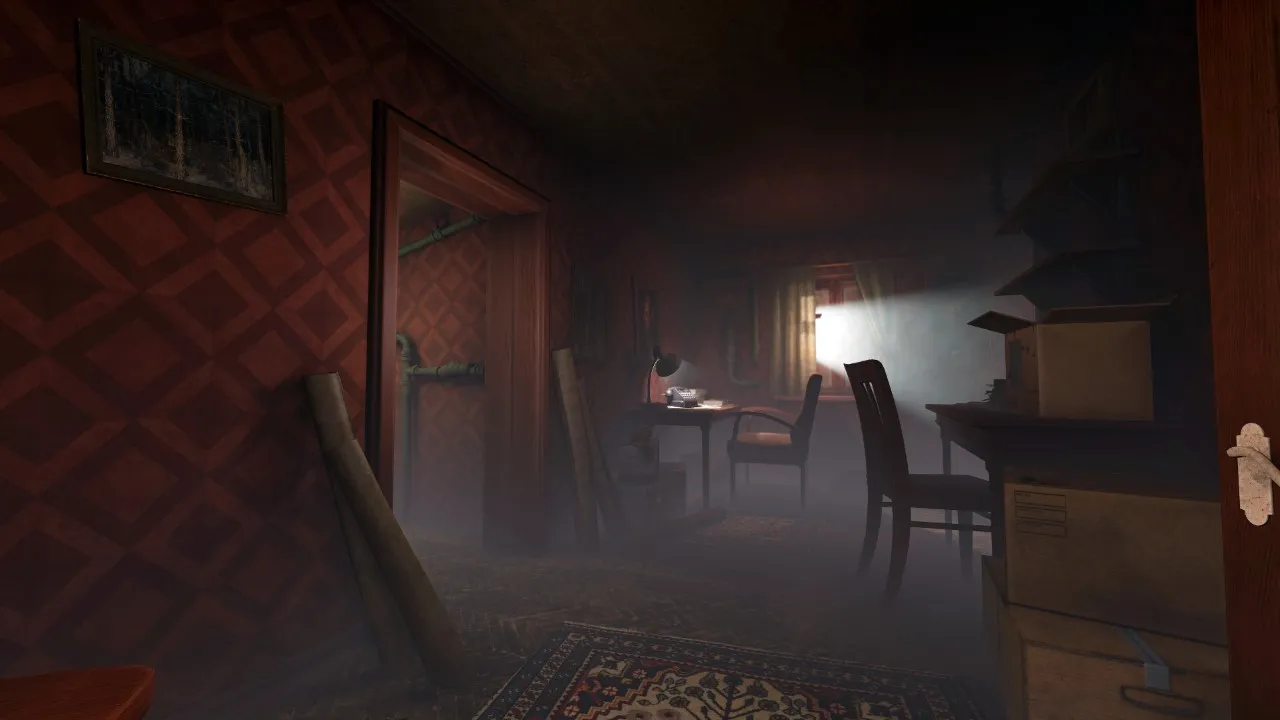 Book world environment in The Bookwalker: Thief of TalesThe transition between chapters is punctuated by phone calls and letters, revealing more about Etienne’s past and the crime that led to his predicament. This keeps the narrative engaging even outside the book worlds.
Book world environment in The Bookwalker: Thief of TalesThe transition between chapters is punctuated by phone calls and letters, revealing more about Etienne’s past and the crime that led to his predicament. This keeps the narrative engaging even outside the book worlds.
Narrative Depth and Missed Opportunities
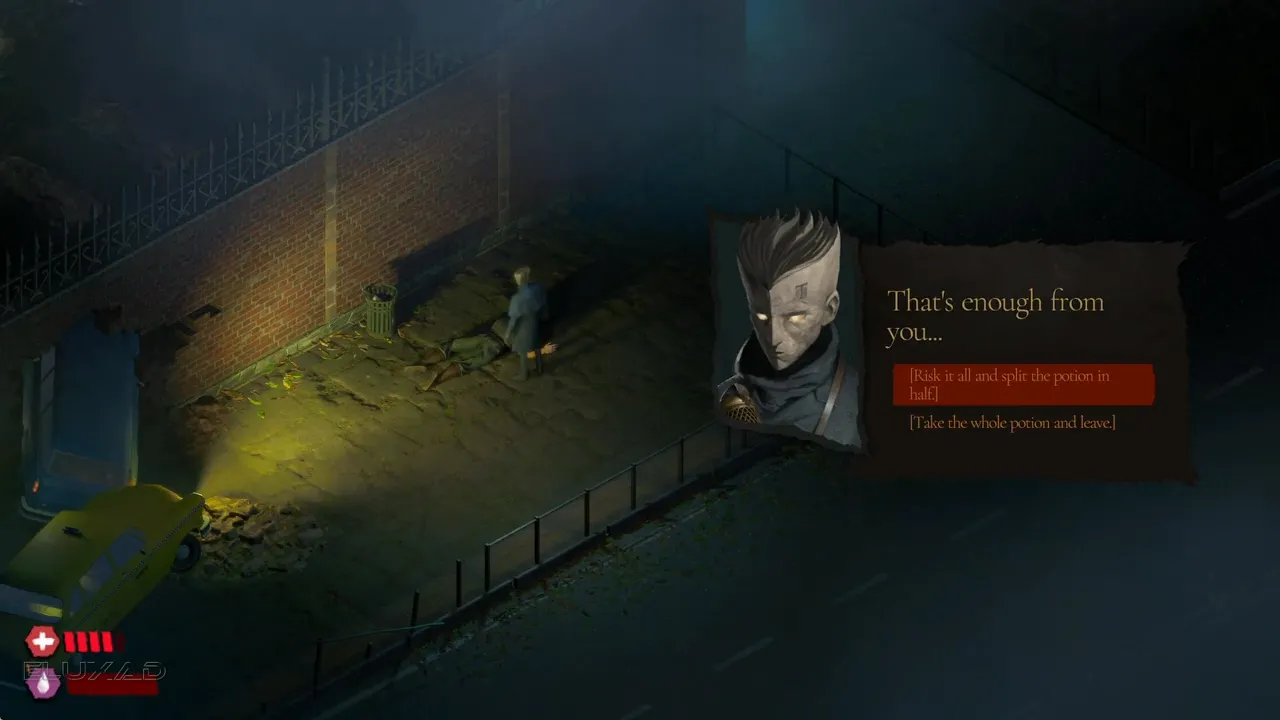 Dialogue choices in The Bookwalker: Thief of TalesThe dialogue between Etienne, Roderick, and the book characters is well-written, adding depth to the narrative and enriching the relationships. However, the dialogue choices often feel inconsequential. Whether Etienne is kind or rude, the outcome remains largely the same.
Dialogue choices in The Bookwalker: Thief of TalesThe dialogue between Etienne, Roderick, and the book characters is well-written, adding depth to the narrative and enriching the relationships. However, the dialogue choices often feel inconsequential. Whether Etienne is kind or rude, the outcome remains largely the same.
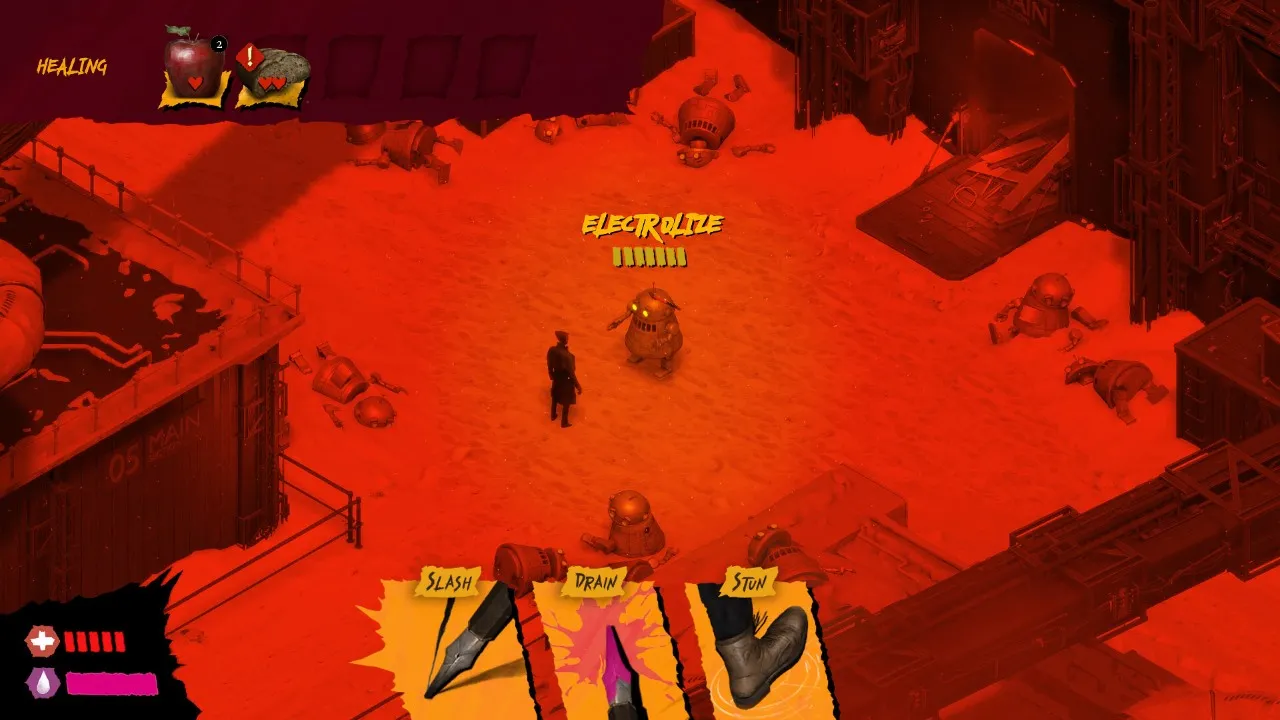 Combat in The Bookwalker: Thief of TalesThe game includes a turn-based combat system, but it feels tacked on and ultimately detracts from the experience. The combat lacks visual flair, rewards, and any real challenge. Losing a battle simply ejects Etienne from the book, allowing him to re-enter with full health and retry.
Combat in The Bookwalker: Thief of TalesThe game includes a turn-based combat system, but it feels tacked on and ultimately detracts from the experience. The combat lacks visual flair, rewards, and any real challenge. Losing a battle simply ejects Etienne from the book, allowing him to re-enter with full health and retry.
Conclusion
The Bookwalker: Thief of Tales shines in its narrative, environmental design, and puzzle mechanics. However, the underwhelming combat system and lack of impactful dialogue choices represent missed opportunities. Removing the combat entirely and focusing on puzzle-based encounters could have significantly enhanced the overall experience. Despite these shortcomings, the game offers a unique and engaging adventure for those who appreciate a strong narrative and clever puzzles.





Comments (0)